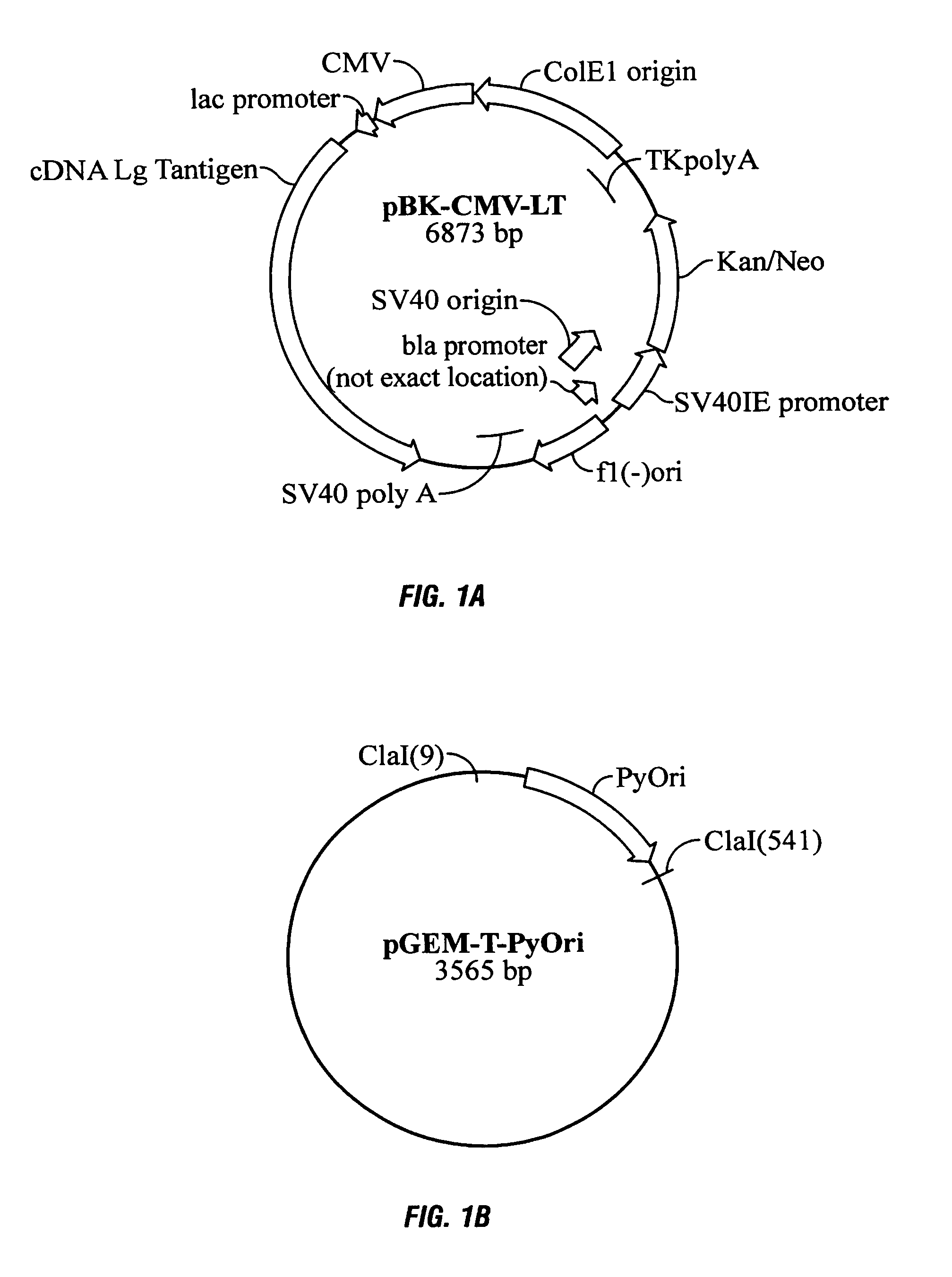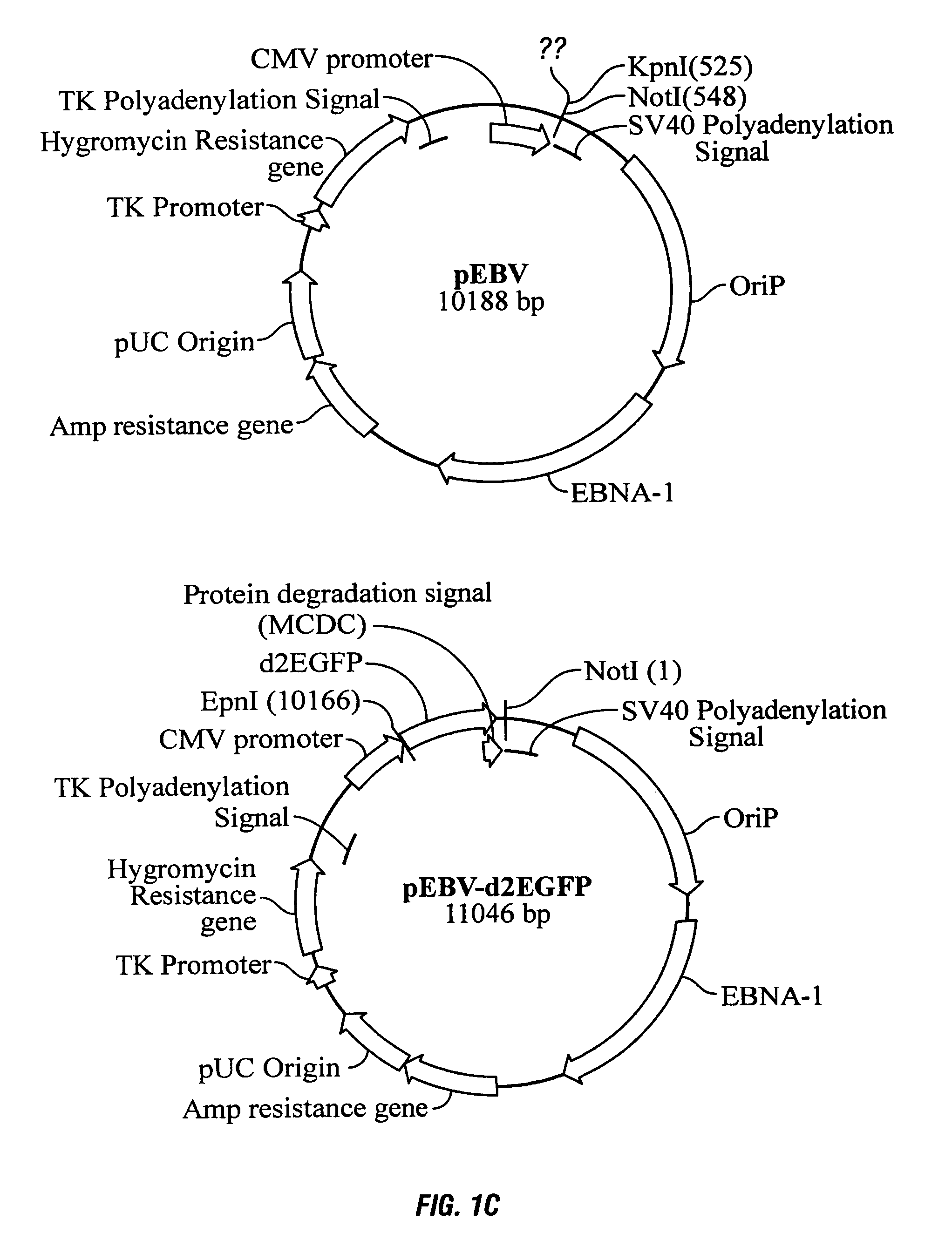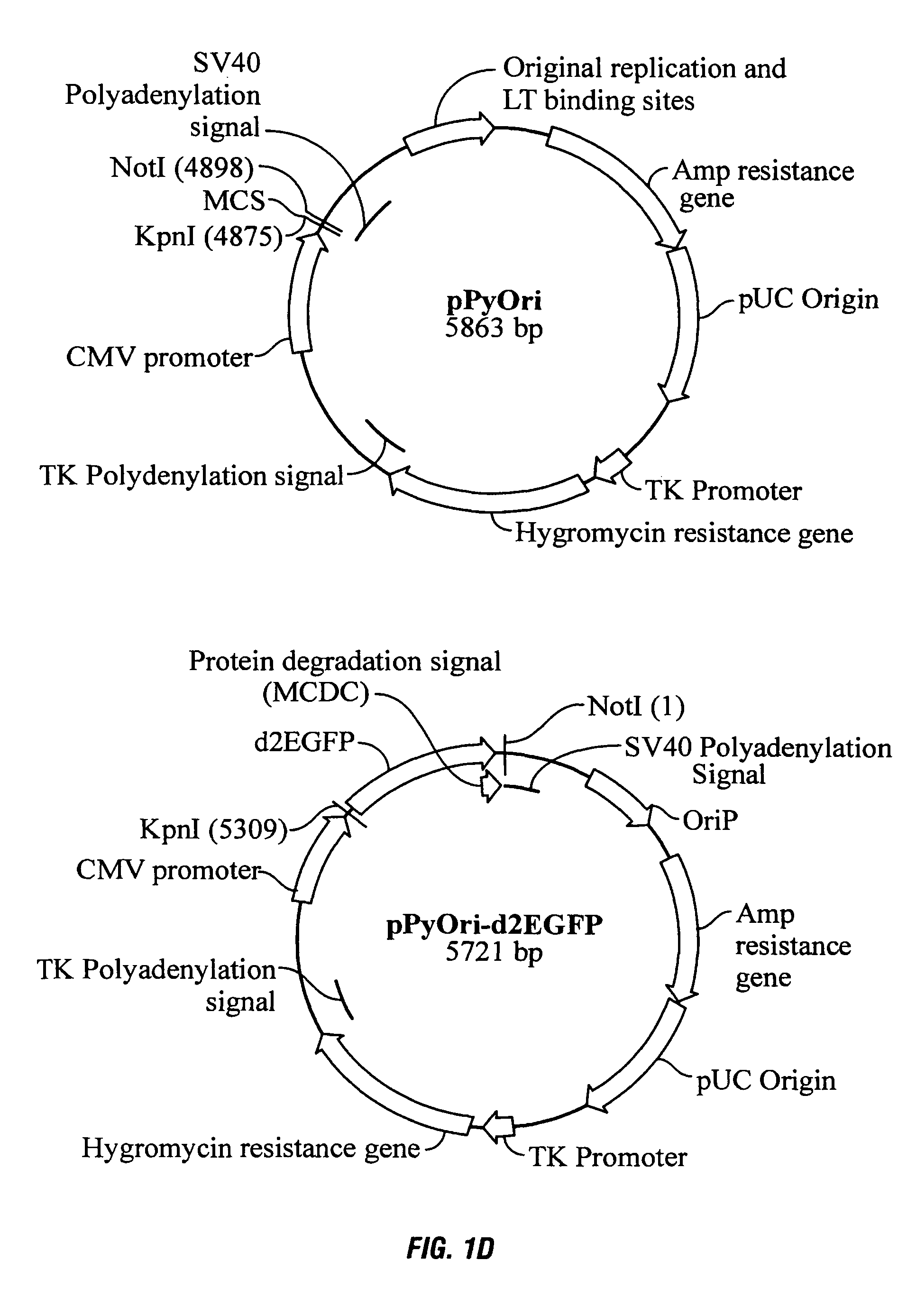Mammalian expression system
a protein and expression system technology, applied in the field of protein expression systems, can solve the problems of inability to produce specific classes of proteins, inability to use ad5-transformed cells, and inability to quickly degrade or lose plasmids, and achieve the effect of easy detection of phenotypes
- Summary
- Abstract
- Description
- Claims
- Application Information
AI Technical Summary
Benefits of technology
Problems solved by technology
Method used
Image
Examples
example 1
Materials and Methods
Cells and Media
[0083]CHO-K1 (ATCC CCL 61) were grown in DMEM:COONS F12 containing 10% FBS. CHO-T cells were adapted to suspension growth in serum-free medium (Excell302; JRH Biosciences, Kansas) and protein-free medium (Excell325; JRH Biosciences, Kansas). XL99 cells (a suspension CHO-K1 cell line adapted to growth in suspension in serum-free media (Neil Kitchen 1999)) were grown in Excell302.
NS0-T
[0084]NS0 cells (Non-secreting mouse myeloma cells) (ECACC 85110503) were used to transfect plasmid encoding Polyoma virus Large T antigen.
Electroporation of NS0
[0085]Electroporation of NS0 cells was carried out using an adapted protocol described by Chu G et al 1987. Briefly, 1−1.5×107 NS0 cells were grown to mid-log phase and electroporated with 10 ug of pBK-CMV-Large-T-Antigen plasmid at 250V using a square wave pulse for 15 ms. Cells were selected 48 hours post transfection in G418 (400 ug / ml).
Lipofection of NS0
[0086]Lipofections were carried out using the lipofect...
example 2
Episomal Replication in CHO Cells
[0102]The expression vector pPyOriLT (FIG. 1G) was transfected into CHO cells to demonstrate episomal replication. Accordingly, pPyOriLT contains PyOri and encodes PyLT, the two viral elements necessary and sufficient to initiate plasmid DNA replication in the presence of permissive CHO cellular factors. Plasmid DNA replication was monitored over 3 days. Low molecular weight DNA was purified from transfected cells according to the Hirt extraction technique as described above (FIG. 5(1)). Plasmid replication was detected by resistance to cleavage by DpnI, which cleaves only when its recognition site is methylated. DNA purified from a dam+strain of E coli (lanes 1 to 4) is a substrate for DpnI (lane 5) whereas plasmid DNA which has undergone one or more rounds of DNA replication in mammalian cells is resistant to DpnI cleavage (lanes 11-20). As shown in FIG. 5(2), the total amount of non-replicated DNA (DpnI-sensitive) drops rapidly from 7000 copies pe...
example 3
(a) Development of CHO-T Cell Line
[0103]The cDNA for Py large T antigen was obtained from ATCC and cloned into the expression vector pBK-CMV (Clonetech). The expression plasmid pBK-CMV-LT (FIG. 1) was used to transfect CHO-K1 (ATCC, CCL61). Cells were selected in G418 (400 ug / ml) for two weeks. Expression of Py Large T antigen was confirmed by immunofluorescence staining as shown in FIG. 2. Individual cells were isolated by fluorescence-activated cell sorting (FACS) using a MoFlo cytometer (Dako-Cytomation, Fort Collins, Co., USA). Several clones were isolated which had varying levels of large T antigen as indicated in FIG. 3. Twenty-one clones with different levels of large T antigen expression were expanded and tested for their ability to support DNA replication of the Py ori-containing plasmid, pNK-Ori-EGFP as shown in the Southern blot of FIG. 4. pNK-Ori-EGFP was transfected into CHO-T clones. Low molecular weight DNA was extracted by the method of Hirt extraction as described a...
PUM
| Property | Measurement | Unit |
|---|---|---|
| time | aaaaa | aaaaa |
| time | aaaaa | aaaaa |
| doubling time | aaaaa | aaaaa |
Abstract
Description
Claims
Application Information
 Login to View More
Login to View More - R&D
- Intellectual Property
- Life Sciences
- Materials
- Tech Scout
- Unparalleled Data Quality
- Higher Quality Content
- 60% Fewer Hallucinations
Browse by: Latest US Patents, China's latest patents, Technical Efficacy Thesaurus, Application Domain, Technology Topic, Popular Technical Reports.
© 2025 PatSnap. All rights reserved.Legal|Privacy policy|Modern Slavery Act Transparency Statement|Sitemap|About US| Contact US: help@patsnap.com



